Torrington, Alberta 作者: 来源: 发布时间:2021-12-09
I.Population and Area
-Area
•Land:0.69 km2 (0.27 sq mi)
-Population (2016)
-Total: 170
-Density: 250/km2 (640/sq mi)
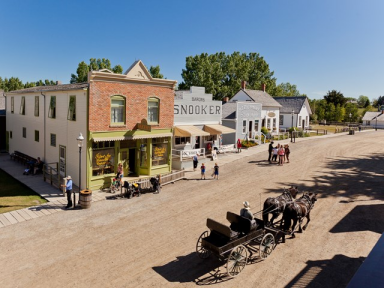
II.Natural Geography (environment and resources)
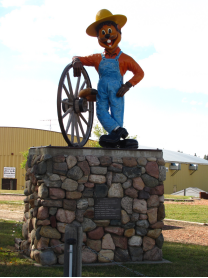
-Torrington is a hamlet in central Alberta, Canada within Kneehill County. It is located approximately 160 kilometres (99 mi) northeast of Calgary at the junction of Highway 27 and Highway 805.
-The hamlet is located in census division No. 5 and in the federal riding of Crowfoot.
-The main industry is agriculture.
-The community is home to the Gopher Hole Museum, dedicated to stuffed Richardson's ground squirrels (technically not gophers) in anthropomorphic taxidermy settings.
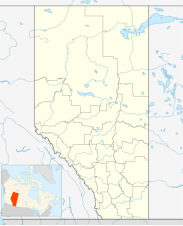
III.ECONOMY
-In 2017, the average overall hourly wage for the province was $28.39. On a regional basis, the average hourly wage varied from $22.33 in Banff-Jasper-Rocky Mountain House to $30.13 in Calgary.

-Website: https://www12.statcan.gc.ca/census-recensement/2016/dp-pd/prof/details/page.cfm?Lang=E&Geo1=DPL&Code1=480276&Geo2=PR&Code2=48&SearchText=Torrington&SearchType=Begins&SearchPR=01&B1=All&GeoLevel=PR&GeoCode=480276&TABID=1&type=0
IV.Industrial Characteristics
-For decades Alberta had economic booms because of revenue from oil and natural gas extraction and the economic spin-offs, which included growth in the petrochemical industry and in pipeline networks.
-In 1985, the energy industry accounted for 36.1% of Alberta's GDP:3 Alberta's GDP was $66.8 billion in 1985, and $335 billion in 2018.
-In 2018, Alberta's energy sector contributed over $71.5 billion to Canada's nominal gross domestic product. According to Statistics Canada, in May 2018, the oil and gas extraction industry reached its highest proportion of Canada's national GDP since 1985, exceeding 7% and "surpassing banking and insurance". with extraction of non-conventional oil from the oilsands reaching an "impressive", all-time high in May 2018. With conventional oil extraction "climbed up to the highs from 2007", the demand for Canadian oil was strong in May.
-From 1990 to 2003, Alberta's economy grew by 57% compared to 43% for all of Canada—the strongest economic growth of any region in Canada. In 2006 Alberta's per capita GDP was higher than all US states, and one of the highest figures in the world. In 2006, the deviation from the national average was the largest for any province in Canadian history. Alberta's per capita GDP in 2007 was by far the highest of any province in Canada at C$74,825 (approx. US$75,000). Alberta's per capita GDP in 2007 was 61% higher than the Canadian average of C$46,441 and more than twice that of all the Maritime provinces. From 2004 to 2014 Alberta's "exports of commodities rose 91%, reaching $121 billion in 2014" and 500,000 new jobs were created. In 2014, Alberta's real GDP by expenditure grew by 4.8%, the strongest growth rate among the provinces." In 2017, Alberta's real per capita GDP—the economic output per person—was $71,092, compared to the Canadian average of $47,417. In 2016, Alberta's A grade on its income per capita was based on the fact that is was almost "identical" to that of the "top peer country"—Ireland.
V.Attractions
1.Torrington Gopher Hole Museum
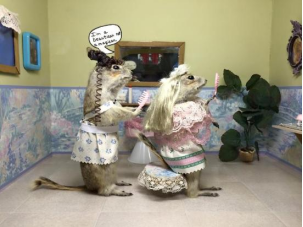
-The Torrington Gopher Hole Museum, located in Torrington, Alberta, features stuffed gophers (Richardson's ground squirrels) posed to resemble townspeople. It was opened in 1996.
-The museum is profiled in Chelsea McMullan's 2015 documentary film World Famous Gopher Hole Museum.
-Admission: $2.00/person $0.50 (children under 14)
-Call us with any questions: 403-631-2133
-Website: http://gopherholemuseum.ca/contact/
2.Carstairs Farmers’ Market

-This seasonal farmers’ market is worth the drive north. The market runs from 11 a.m. to 3 p.m. on select Saturdays from May through September. At this small-town market you’ll find everything from homemade baked goods to crafts to Hutterite preserves. The 2018 market days are May 12, June 9 and 30, July 21 and 28, August 11 and 25 and September 15 and 29. For Beef and Barley day on July 21 and Pumpkin Festival on September 15, the market is open from noon until 4 p.m.
-Location: Carstairs Curling Rink, 350 11 Ave.,
-Website: carstairsfarmersmarket.weebly.com
3.PaSu Farm
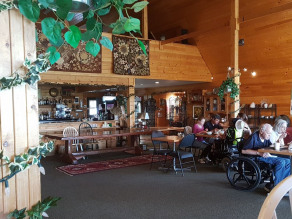
-On the way into Carstairs, turn onto Highway 580 and spend some time visiting Pat and Sue de Rosemond’s sheep farm. See the working farm and shop for a range of sheep-related products in the boutique, like cozy insoles, mitts and socks. The boutique is open Tuesday through Sunday. Stick around for some food, too. As well as lunch, afternoon tea and meals to go, PaSu Farms hosts special foodie events like its Saturday evening barbecue in the summer. (Find more information on dining at PaSu Farm below.)
-Location: PaSu Farm, off Hwy. 580, 403-337-2800,
-Website: pasu.com
VI.History
-The face of railways in Western Canada changed in the mid 1990s. Prior to that time the two major carriers were required to maintain most prairie branchlines, even if that line was a money loser (most were, even with subsidies). The government felt it was essential that they be kept in service so that grain could be sent to market.
-Then the regulations changed and within short order mass abandonments took place and lines were being pulled up as fast as crews could get to them. Concurrent with that, old grain elevators were torn down just as fast, with little thought given as to their historical value. It was like a tsunami hit, the line was torn up, the elevators demolished and as a result the town was poorer for it.
-On arriving in Torrington something caught my eye and a demolition company was making short work of the towns two grain elevators. The Alberta Wheat Pool elevator was already in ruins, a pile of splintered wood and not much else. Not far away, Pioneer elevator (in AWP blue!) was facing the same fate. Equipment was busy tearing it apart and while I had the chance I took a number of pictures, what you see here. What a sad event, yet it’s strangely fascinating at the same time. I am glad I caught it.
-At the peak in the 1930s, there were over 1700 traditional style wooden elevators scattered throughout Alberta. By the time I visited Torrington, there were under 400 with the numbers quickly shrinking. By 2012, that there were perhaps a hundred and fifty…or less – we’re only counting traditional wooden elevators that do or once sat along a rail line – most were either abandoned, unused or owned by local farmers for grain storage. Not counted: seed cleaning plants, modern concrete or steel high-throughput elevators, farm elevators or feed mills.
-Of course, grain still moves by train – it’s the most efficient way after all – but now giant terminal elevators, massive concrete structures that can be seen from kilometres away, now dish out the grain. And instead of loading a few cars at a time, they fill a hundreds or more in one fell swoop.
-Website: https://www.bigdoer.com/5636/exploring-history/a-prairie-sentinel-falls-torrington-alberta/
VII.Other information
-A very large outdoor gopher sculpture (12 ft high) named "Clem T. GoFur" is located in the village.
-All 11 of Torrington's fire hydrants were painted to look like gophers.
-Torrington was incorporated as a village until 1997, when it dissolved to hamlet status under the jurisdiction of Kneehill County.
VIII.Contact information
-Government
•Type: Unincorporated
•Mayor: Kneehill County Council
-Address: 101 1 Ave, Torrington, AB T0M 2B0
-TEL: +1 403-631-2133.
